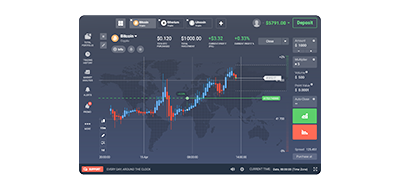Назад
Contents
Bull Flag Pattern: All You Need to Know


Vitaly Makarenko
Chief Commercial Officer

Demetris Makrides
Senior Business Development Manager
What is the Bull Flag Pattern?
The bull flag pattern is a type of chart pattern that represents a bullish continuation in financial markets. From this pattern, one can deduce that the strong uptrend of an asset will likely continue after a brief consolidation. It is important to understand how to identify and trade the bull flag pattern for any trader looking to capitalize on upward trends.
Anatomy of a Bull Flag

1. The Flag Pole
The flag pole is the first sharp, strong upward move that precedes the consolidation period. This sharp rise in price signifies latent buying pressure and momentum in the market. Key characteristics of the flag pole include:
- Preceding Uptrend: The flag pole emerges from a well-defined, bullish trend in the asset’s price.
- Volume Patterns: Volume is usually high at the formation of a flag pole since demand for the asset is high.
2. The Flag
The flag is a consolidation period right after the flag pole. This is where price pullbacks or trades sideways within a rectangular or slightly downward-sloping channel. For the flag itself, the characteristics are:
- Consolidation Shape: The flag can take the form of a horizontal rectangle or a slight downward-sloping channel, indicating that the uptrend is taking a break.
- Volume Patterns: Generally, trading volume contracts during the flag formation as participants take a rest and consolidate their positions.
3. The Breakout
The final part of the bull flag pattern is a breakout. This is when the price breaks above the upper boundary of the flag, indicating the continuance of the underlying bullish trend. Things that one should consider during the breakout include:
- Breakout Confirmation: As a rule of thumb, the best practice is to wait for a decisive close above the flag’s upper trendline to confirm the breakout.
- Volume Patterns: An increased volume of trade during a breakout is further confirmation of strength in the trend.
Knowledge of the anatomy of the bull flag pattern significantly aids in the identification and trading of this continuation pattern.
How to Identify Bull Flag Patterns

1. Identify the Flag Pole
The first step in identifying a bull flag is to spot the preceding flag pole. Look for a sharp, almost vertical rise in the asset’s price, indicating strong buying pressure and momentum. Ensure that this upward move is part of a larger, well-established bullish trend.
2. Analyze the Flag Consolidation
Once the flag pole has been pinpointed, direct your attention to the consolidation period and the “flag” of the pattern. Look for the following characteristics:
- Flag Shape: The flag can take either a horizontal rectangle or a slight downtrend channel. Avoid only very volatile or different patterns.
- Consolidation Duration: The best consolidations of bull flags usually take a period ranging from 1-4 weeks; sometimes it takes more time for the development of the entire pattern. The tighter the consolidation, the more reliable the pattern tends to be.
3. Confirm the Breakout
The final step in confirming the bull flag pattern is confirmation of the breakout above the flag’s upper trendline. This breakout should be accompanied by:
- Increased Volume: Any increase in volume during the breakout stage will provide further confirmation of the validity of the pattern and more importantly, the strength of the buying behind it.
- Decisive Breakout: A decisive close over the upper boundary of the flag will be confirmation enough for the breakout.
Patience again plays an extremely vital role in correctly identifying the pattern. Keep away from those trades involving incomplete or suspect formations.
How to Measure the Bull Flag Pattern
1. Determine the Height of the Flag Pole
The height of the flag pole is another important determinant in establishing your possible price target. Measure the length that the flag pole covers vertically since this will be your base for projecting your upside price target.
2. Project the Price Target
To project your price target, simply add the height of the flag pole to the breakout point of the flag pattern. That gives you an initial, conservative price target to work with. For example: if the flag pole was 50 pips high and the breakout occurred at 1.2000, your price target is 1.2050.
3. Set Stop-Loss Levels
A common way of placing stops when it comes to stop-loss is just below the lowest point of flag consolidation. This helps protect your position in case the breakout fails and the price reverses back into the flag pattern.
Accurately measuring the bull flag pattern and setting appropriate entry, stop-loss, and price target levels are very important in managing your trades effectively to maximize your profit potential.
Variations of the Bull Flag Pattern
While the textbook version of the bull flag pattern is the most widely accepted, there are many other variations you should know. Familiarity with these other patterns will allow you to expand your resources when it comes to technical analysis.
1. Bullish Pennants
A bullish pennant is a bull flag variation containing a symmetrical triangular formation at the consolidation phase. This generally gives way to a very strong continuation of the uptrend in the stock.
2. Symmetrical Triangles
Another kind of bull flag is the symmetrical triangle pattern. In this case, too, consolidation takes place in such a way that it forms a symmetrical triangle, wherein price action converges to a point. The resumption or continuation of the bullish trend will be signalled once the breakout occurs above the upper trendline of the triangle.
3. Ascending and Descending Channels
While the traditional bull flag pattern has a horizontal or very slight downward consolidation aspect, you may also encounter other variants that include an ascending or descending channel. These variations can be equally rewarding for reliable continuation signals provided that these variations retain the characteristics of the overall bull flag.
Gaining experience with these different kinds of bull flag patterns will make it easier to identify more bullish continuation opportunities in the market.
Pros and Cons of Bull Flags
Pros of Bull Flags
- Reliability as a Continuation Pattern: Bull flags are generally considered one of the most reliable continuation patterns, insinuating further movement of the current uptrend.
- Clear Entry, Stop-Loss, and Target Levels: The structure of the bull flag pattern gives clear indications of where to enter, set stop-loss, and take profit.
- The Diverseness of Many Different Markets: Bull flag patterns appear in quite a wide array of financial markets such as stocks, forex, and commodities – thus making this pattern of chart one of the most versatile tools among traders.
Cons of Bull Flags
- False Breakouts on Lower Timeframes: Sometimes, at a lower timeframe, the bull flag pattern can give false breakouts – thereby placing the trader into potential losses.
- Risk of Extended Consolidation Periods: During the formation of a bull flag pattern, the consolidation phase may extend beyond expectations in certain market conditions. This may result in an extended consolidation period that delays a breakout to realize some profits.
Best Practices for Trading Bull Flag Patterns
Given an understanding of the fine details of the bull flag pattern, the following section explores some best practices on how to trade this continuation pattern.
1. Confirm the Overall Market Trend
This means that, before trading a bull flag pattern, one needs to have established that the trend of the underlying market is bullish. In other words, what should be seen is a well-established, long-term uptrend of the price action of the asset. Trading bull flags in either a bearish or sideways market environment increases the risk and reduces the likelihood of success.
2. Determine the Best Entry Point
If you are about to trade based on a bull flag pattern, then there are two major options:
- Breakout Entry: Await a decisive price break above the upper trend line of the flag for a long entry.
- Pullback Entry: If after the initial breakout, the price momentarily pulls back, one can look to go long at a slight retracement toward the upper trendline of the flag.
3. Manage Risk Using Stop-Loss Orders
Trading bull flag patterns requires proper risk management. Place your stop-loss order a little below the lowest point of the flag consolidation, allowing a cushion in case the breakout doesn’t work out.
4. Strategies for Taking Profit
The usual way of taking profits is by using the height of the flag pole. Starting from the breakout point, add the flag pole height to it to come up with an initial price target. Another approach here is to trail your stop-loss orders to lock in gains as the trade unfolds.
The implementation of such best practices will serve to optimize your trading strategy by maximizing your returns and minimizing losses associated with the bull flag pattern.
How to Integrate Bull Flags into a Trading Strategy
As powerful as the bull flag pattern may be unto itself, it should be incorporated into a broader, robust trading approach. This is how you’ll be able to take the best advantage of this continuation pattern while minimizing the associated risks.
1. Integrating Technical Indicators with Bull Flag Patterns
Consider incorporating other technical analysis tools, such as moving averages, oscillators, and trend-following indicators, to enhance your identification and confirmation of bull flag patterns. The synergy between these different indicators can provide a more robust trading signal.
2. Incorporating Fundamental Analysis
Do not rely on technical patterns alone, such as the bull flag. Complement your study with fundamental factors, economic data, trends in industries, and company news that influence the asset’s price movement, so your view about the market environment and potential drivers of the asset’s price movement is well-rounded.
3. Managing Position Sizing and Risk
You should use proper position sizing and proper risk management to trade any bull flag pattern. Set your proper position sizes regarding the size of your account and risk tolerance; therefore, you should have stop-loss orders to protect your capital. By being consistent with proper risk management, you will thus find your way in the markets much more easily.
By incorporating the bull flag pattern in a wider trading strategy, you will be able to exploit its full potential while limiting the risks associated with relying on any one technical analysis tool.
Conclusion
The bull flag pattern is one of the most effective technical analysis weapons that can be a part of any trader’s armamentarium. Understanding its anatomy, correctly identifying the pattern, measuring its potential, and incorporating this pattern into a broad trading strategy will go a long way in helping you increase your probability of success in the market.
Remember, the key to trading the bull flags effectively has to do with patience, attention to detail, and flexibility in your approach to consideration of market conditions. Study hard, backtest your strategy on a demo, and learn from your successes and failures.
FAQ
A bull flag is a bullish continuation pattern that consists of a flag pole-e.g., a sharp uptrend followed by a flag, or consolidation.
Bull flags are considered one of the more reliable continuation patterns, with a success rate of 65-80%.
The bull flag pattern usually works 65-80% efficiently for the continuation of the uptrend.
1. Identify the flag pole 2. Draw the flag (rectangular/angled channel) 3. Draw the breakout line at the top of the flag
Обновлено:
3 февраля 2025 г.

